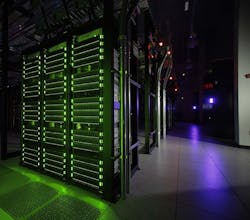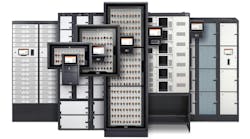Paul Mercina, Director of Product Management, Park Place Technologies, walks readers through three steps to help companies avoid unnecessary hardware refreshes.
Paul Mercina, Director of Product Management, Park Place Technologies
When to refresh IT hardware is always a difficult question. No company can afford to fall behind the competition or business requirements by using inadequate data center equipment, yet no enterprise or SMB wants to waste money and invite the risk of an ambitious refresh without a compelling reason.
Today’s uncertain public health environment is causing even greater quandaries. Many organizations are limiting capital expenditures, and IT leaders are under increased pressure to balance budget concerns, maximize return on existing hardware investments, and trim total cost of ownership, all while ensuring performance and reliability.
With so many factors to consider, how do you determine if a slated hardware refresh is necessary?
No. 1 — Do an Audit and Consider Alternatives
First, determine what gear is deployed and what’s sitting idly by. Although this seems obvious, audits at premiere multinationals have caught hundreds of thousands of dollars worth of unused servers hiding in data center corners.
Avoid this mistake. Take the time to verify that the equipment inventory matches what’s actually on the floor. And make it useful by adding each model’s specifications, if not already listed. This information will guide the assessment of current hardware capabilities and unmet needs.
Such an evaluation should include options for repurposing existing equipment to fill any gaps. Third-party maintenance firms such as Park Place Technologies can help you look at alternatives to new hardware outlays.
No. 2 — Don’t Believe the Hype
A detailed audit promotes an analytical frame of mind, but it must stand up against the sophisticated marketing campaigns designed to give the impression that new IT gear will alleviate every pain point. Following trends is for fashion, not efficient IT management.
It’s vital to keep in mind that deploying the latest hardware, as attractive as it may seem, has downsides. Early adopters often experience more issues with configuration, testing, and deployment and wind up serving as unpaid product testers for the manufacturer.
Third-party maintenance providers like Park Place can provide IT organizations with greater latitude to manage the product lifecycle their own way.
No. 3 — Secure Post-Warranty and Post-EOSL Support
If the first two tips can be boiled down to one essential—chart your own path—the results can raise support questions. What if the right refresh cycle doesn’t line up with the one the manufacturer recommends? For instance;
- If a storage cluster is reaching the end of the initial warranty and the OEM will charge a fortune for renewal but discount support for a later model, doesn’t it make sense to upgrade?
- If a server has is now end-of-support-life (EOSL) and the manufacturer won’t provide troubleshooting assistance, spare parts, or break/fix any longer, isn’t a refresh mandatory?
The answer to both is “no.” Third-party maintenance providers like Park Place can provide IT organizations with greater latitude to manage the product lifecycle their own way by:
- Minimizing support costs. Many third party maintenance providers offer better-than-OEM support for about one-third of the cost. The price is commensurate with post-warranty hardware and makes extended lifecycles more financially attractive.
- Ensuring reliability. Some IT pros worry about component failure in older equipment, but the modest risk can be easily mitigated by high-quality maintenance. The best option is to seek out proactive hardware monitoring, which will oversee systems 24/7 and alert service engineers of any event at the earliest stages. With such a solution in place, uptime can actually increase in the later phases of the equipment lifecycle.
- Longer lifespan. Third-party maintenance providers will support most post-EOSL systems, helping IT organizations avoid a hard upgrade deadline and keep equipment as long as preferred.
Conclusion
The watchword for refreshes is value. Companies need to:
- Maximize the return on the incredibly large investments they make in IT hardware
- Reduce capital expenditures on new equipment, especially in difficult economic times, and schedule them to suit the business, not the OEM
- Minimize the total cost of ownership, including mitigating maintenance costs
- Plan smartly to undertake essential refresh projects when they can be organized and executed flawlessly and deliver immediate, positive impact
If the right choice is to slow the refresh cycle—and it often is—integrating appropriate support strategies, including third-party maintenance from companies like Park Place, will help the IT organization ensure performance and reliability while waiting on the right time to upgrade.
Paul Mercina is the Director of Product Management at Park Place Technologies.


